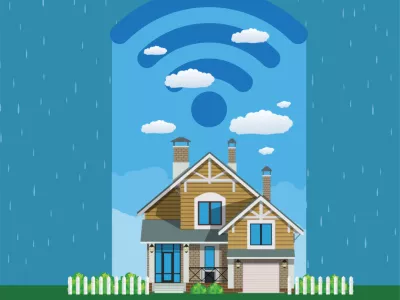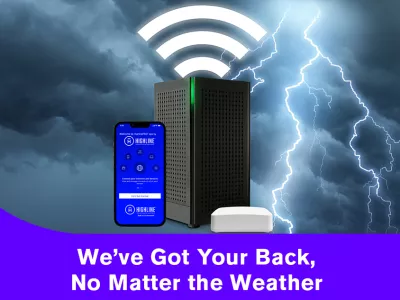Blog
June 12, 2024
Why Fiber Internet Is More Reliable in All Weather

Most people know that fiber internet is the fastest option available. Fiber optic technology transfers data at near-light speed, making streaming movies in 4K or sharing bandwidth with your family a breeze.
Did you know fiber is more reliable than other types of internet, especially in severe weather? Legacy internet connections—like cable, DSL, satellite, and wireless—rely on outdated technologies and can't match fiber's speed or reliability. Due to their structural differences and installation methods, these older technologies are much more susceptible to weather-related outages.
At Highline, we're proud to offer the fastest, most reliable internet in the community. Here's why fiber internet stands above other technologies for reliability, ensuring you can count on it in almost any weather condition:
Fiber Lines Are Buried, Shielding Them from Weather Threats
Unlike other types of internet, such as satellite, DSL, or wireless 5G, our fiber lines are buried underground. This placement protects your fiber connection from wind, rain, ice, and other weather impacts. Fallen trees, which often disrupt telephone and power lines, can't affect buried fiber lines. Think of how gusty winds, thunderstorms, or ice storms can bring down tree limbs or entire trees over power lines, causing outages for thousands of customers. Our underground fiber installation avoids these risks. Additionally, fiber is less prone to temperature-related service disruptions because the ground insulates it from extreme temperatures.
Fiber Is Immune to Electromagnetic Interference (EMI)
Another significant advantage of fiber is its immunity to electromagnetic interference (EMI). EMI occurs when an external source—such as household appliances or nearby construction—disrupts the transmission of electrical signals. Bad weather, especially lightning, can also cause EMI, leading to service disruptions, slowdowns, or even crashes. During bad weather, the last thing you want is an internet outage when you need to check on loved ones, get weather updates, or keep the kids entertained.
Cable internet uses copper-based coaxial cables, which are susceptible to EMI from common sources like microwave ovens, power lines, and electrical motors. In contrast, fiber optic lines are made of thin glass strands that transmit signals at nearly the speed of light and are unaffected by EMI. Therefore, fiber internet remains stable and reliable, even during electrical disturbances.
Light Is Flexible
Fiber's flexibility provides another advantage in adverse weather conditions. While extreme weather can cause cable lines to bend, damaging the copper wiring and disrupting the internet signal, fiber optic lines can bend without crimping or breaking. The glass strands in fiber optic cables are so flexible that the signal can "go with the flow," maintaining a stable connection unless the fiber is physically cut.
From its underground installation to the superior quality of its materials, fiber internet is more reliable in all weather conditions than cable, DSL, satellite, or wireless internet. For the most dependable and fastest internet connection, fiber is unmatched.
To connect to Highline's advanced fiber network and enjoy a better internet experience in all weather conditions, give us a call today!

